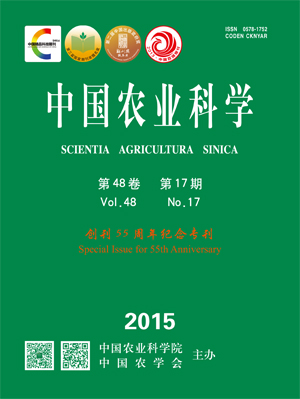-
Genomics-Based Crop Germplasm Research: Advances and Perspectives
- LI Yu, LI Ying-hui, YANG Qing-wen, ZHANG Jin-peng, ZHANG Jin-mei, QIU Li-juan, WANG Tian-yu
-
Scientia Agricultura Sinica. 2015, 48(17):
3333-3353.
doi:10.3864/j.issn.0578-1752.2015.17.003
-
 Abstract
(
910 )
Abstract
(
910 )
 HTML
(
23 )
HTML
(
23 )
 PDF (512KB)
(
2092
)
PDF (512KB)
(
2092
)
 Save
Save
-
References |
Related Articles |
Metrics
The scale of activities related to crop germplasm is massive, including basic work (germplasm collecting, documentation, multiplication, conservation, regeneration, distribution and information system establishment, etc.), basic research (studies on crop origin, domestication and dispersal, germplasm classification, ethnobotany, indigenous knowledge, etc.), and applied basic research (genetic diversity assessment, precise phenotypic evaluation of important traits, germplasm genotyping, gene discovery and allele mining, germplasm enhancement etc.). With the efforts in the last century, the basic work on crop germplasm has been very fruitful and the system of crop germplasm conservation and utilization has been established in the world. Because the traditional ideas and methodologies based on morphology had their innate disadvantages, however, the basic research and the applied basic research had developed along at an agonizingly slow pace before genomics appeared. With rapid development of molecular marker technology and next-generation sequencing technology, theories and techniques of genomics have extended to multi-faceted germplasm research, resulting in revolutionary changes of conception and methodology in germplasm conservation, in-depth research and utilization. The achievements made in genomics provide not only theoretical guidance to collecting and conservation of crop germplasm, but also core theories and techniques to clarify crop origin and evolution. Meanwhile, genomics has the power to promote the efficiency of gene discovery and germplasm enhancement. Especially, the rapid development of whole genome sequencing, genome re-sequencing and simplified genome sequencing enable comparisons of genomic variation in different germplasms at the whole-genomic level. Further, crop origin can be illustrated and effects of domestication, improvement and dispersal on germplasm can be clarified. Population structure and genetic diversity of crop germplasm preserved in genebanks and existing in the wild can be evaluated in depth, generating huge amounts of information useful in designing optimum strategies of ex situ preservation and in situ conservation of crop genetic resources. Through integrating phenotypic data, new genes and their favorable alleles can be mined by using various approaches such as linkage mapping and association analysis. In addition, germplasm enhancement can also be benefited from the advances in genomics through the use of alleles discovered and other molecular marker-based techniques such as marker-assisted selection and genomic selection. This paper reviews the advances of genomics-based crop germplasm research, especially the applications of genomics in germplasm genotyping, ex situ and in situ conservation, crop origin and evolution research, structural diversity assessment, gene discovery and allele mining, and germplasm enhancement etc. Finally, future development directions and priorities in the field are proposed, which emphasize the close combination of genomics and crop germplasm research to provide a strong support to effective conservation and efficient utilization of crop germplasm in terms of theories, techniques, materials and information.









